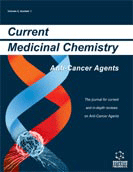Abstract
Pyrylium-type salts derived from DMXAA and FAA are proposed to play an important mechanistic role in anticancer action. Electron transfer (ET) processes apparently initiate cell signaling cascades that lead to the observed effects, such as, antivascular influences, cytokine induction, and apoptosis. Possible participation of nitric oxide and serotonin is discussed. Structure-activity relationships involving DMXAA, FAA, acridines, and quinolines support the hypothetical framework, as well as electrochemistry and photochemistry. Similarity is pointed out to the action of plant hormones, e.g. ethylene. Involvement of ET pathways places the cationic salts within the general mechanistic framework for other anticancer agents. Other drug activities of xanthenones are in accord with the ET approach. Insight into fundamental mechanistic aspects should aid in development of improved drugs in this class through rational design.
Keywords: dmxaa, faa, anticancer, pyrylium, electron transfer, cell signaling, nitric oxide, serotonin
 5
5

















